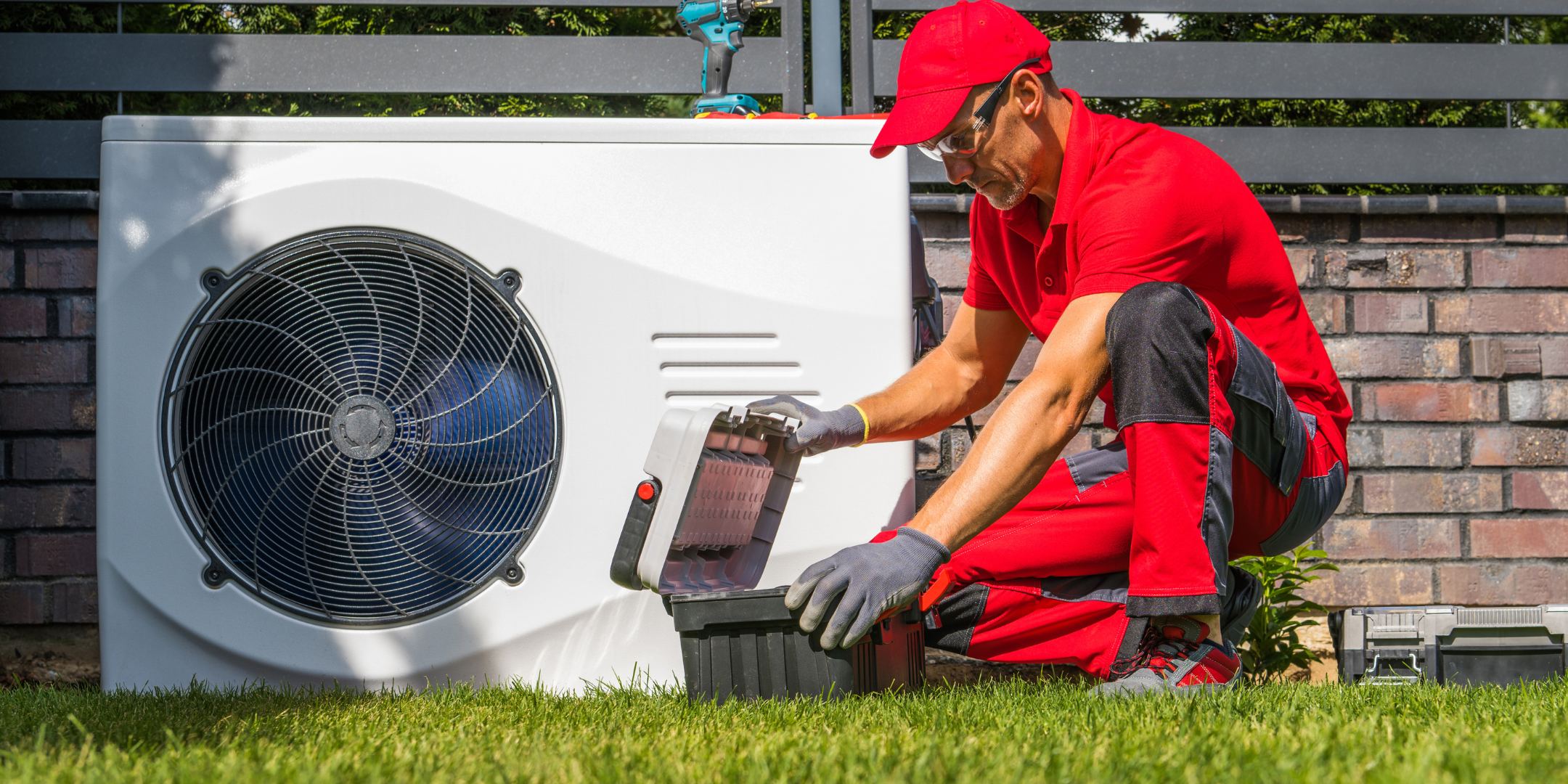Reviewing the Mitsubishi Electric Hyper-Heating H2i Series
September 12th, 2024
6 min read
By Daphne Hunt

When winter hits hard, you need an HVAC system that won’t leave you in the cold – especially in areas with extreme temperatures. Homeowners in cold climates often face high energy bills and inconsistent heating, which makes choosing the right heat pump critical.
especially in areas with extreme temperatures. Homeowners in cold climates often face high energy bills and inconsistent heating, which makes choosing the right heat pump critical.
With over 16 years of experience, we’ve seen firsthand how important it is to have a reliable heating system, and the Mitsubishi Electric Hyper-Heating H2i series stands out as one of the top choices. By the end of this article, you’ll know everything you need about the Hyper-Heating H2i system – from its performance in cold weather to its energy efficiency and features, so you can decide if it’s the right fit for your home.
What Makes the Mitsubishi Hyper-Heating H2i Series Unique?
The Mitsubishi Electric Hyper-Heating H2i series is designed to solve a common issue with traditional heat pumps: maintaining efficiency in extreme cold. Where many heat pumps struggle to perform in freezing conditions, the Hyper-Heating H2i shines. Here’s what makes this series stand out from other options:
1. Works in Sub-Zero Temperatures
Traditional heat pumps tend to lose efficiency as temperatures drop below freezing, making them unreliable for homes in very cold climates. The Hyper-Heating H2i system, however, is built specifically to maintain its performance even in extreme cold. It can provide full heating capacity down to -13°F. This means that even when the temperature plummets, your home will stay warm and comfortable. This makes it ideal for homeowners in regions with harsh winters, such as the northern United States or Canada.
Most heat pumps begin to struggle around 32°F, but the Hyper-Heating H2i uses advanced inverter technology to modulate its output, ensuring it keeps your home warm while using less energy than a traditional heat pump.
2. High SEER2 and HSPF2 Ratings
Energy efficiency is a key selling point of the Mitsubishi Hyper-Heating H2i. The system boasts SEER2 ratings of up to 20 and HSPF2 ratings as high as 10.
- SEER2 (Seasonal Energy Efficiency Ratio) measures the cooling efficiency of the system over an entire season. A rating of 20 means that it’s highly efficient, saving homeowners more money on cooling during the summer months.
- HSPF2 (Heating Seasonal Performance Factor) measures heating efficiency. With a rating of 10, the system is also among the top performers in heating, making it more efficient than many conventional heat pumps.
These high ratings translate to lower energy bills and consistent comfort, even in extreme weather conditions. Homeowners can save significantly on their annual energy costs while ensuring their home stays warm in winter and cool in summer
3. Ductless and Ducted Options
One of the most unique features of the Mitsubishi Hyper-Heating H2i series is its flexibility. The system comes in both ductless and ducted configurations, allowing it to cater to different types of homes and needs:
- Ductless systems: Ideal for homes without existing ductwork or for smaller spaces like single rooms or apartments. These systems are easy to install and allow for zoned heating and cooling, meaning you can control the temperature in specific areas of the house rather than heating or cooling the entire home.
- Ducted systems: For larger homes or spaces with existing ductwork, the ducted version of the Hyper-Heating H2i integrates seamlessly into your home’s infrastructure, delivering consistent comfort throughout the entire home.
This versatility means that regardless of your home’s setup, the Hyper-Heating H2i can be tailored to fit your needs, providing energy-efficient heating and cooling year-round.
Who Should Buy the Mitsubishi Hyper-Heating H2i Series?
Homeowners in Cold Climates
If you live in a region where winter temperatures drop below freezing, this system is designed for you. The Hyper-Heating H2i continues to provide efficient heating even when outdoor temperatures dip as low as -13°F. This makes it ideal for places with long, harsh winters, where traditional heat pumps would struggle to maintain warmth.

Those Looking for Energy Savings
With SEER2 ratings up to 20 and HSPF2 ratings up to 10, this system is highly energy-efficient. If you’re looking to lower your utility bills while keeping your home consistently warm, the Hyper-Heating H2i will deliver long-term savings. It also qualifies for tax credits and rebates under programs like the Inflation Reduction Act, which can further reduce costs.
Homes Without Ductwork
If your home doesn’t have existing ductwork, the ductless version of the Hyper-Heating H2i is an excellent option. It allows you to heat specific zones efficiently without needing costly duct installation, making it perfect for older homes or areas like attics and basements.
Environmentally Conscious Homeowners
This system uses a variable-speed compressor and advanced inverter technology, which minimizes energy use and reduces your home’s overall carbon footprint. It’s a great choice if you’re looking for an eco-friendly solution to heating and cooling.
Who Should NOT Buy the Mitsubishi Hyper-Heating H2i Series?
Homeowners in Mild Climates
If you live in an area where temperatures rarely drop below freezing, you may not need the extra cold-weather capabilities of the Hyper-Heating H2i. In milder climates, you could opt for a standard heat pump or HVAC system that provides sufficient heating without the extra investment in cold-climate technology.
Those on a Tight Budget
While the Mitsubishi Hyper-Heating H2i is highly efficient, it is also a premium system with a higher upfront cost. Depending on the size and complexity of your installation, prices can range between $4,000 and $12,000. If you’re on a tight budget or don’t need the cold-weather performance, a more cost-effective system might be a better fit.
Homes with Existing Ductwork in Moderate Climates
If your home already has ductwork and you live in a moderate climate, you don’t need the advanced features of this system. A traditional ducted heat pump will provide adequate heating and cooling for less money. Additionally, the ductless option may not be necessary for homes with ductwork already in place.
Tax Credits and Rebates for the Mitsubishi Hyper-Heating H2i Series
The Mitsubishi Electric Hyper-Heating H2i series qualifies for significant tax credits and rebates under the Inflation Reduction Act (IRA) and other state or utility incentive programs. These financial incentives can help offset the upfront cost of purchasing and installing this energy-efficient heat pump, making it an even smarter investment for homeowners.
Inflation Reduction Act (IRA) Tax Credits
The Inflation Reduction Act includes tax credits aimed at encouraging homeowners to upgrade to energy-efficient systems like the Mitsubishi Hyper-Heating H2i. Here's how you can benefit:
Energy Efficient Home Improvement Tax Credit (25C)
Under this credit, homeowners can claim 30% of the cost of installing energy-efficient HVAC systems, including the Mitsubishi Hyper-Heating H2i series. This credit applies to purchases made between January 1, 2023, and December 31, 2032, and the system qualifies because of its high SEER2 and HSPF2 ratings. You can receive up to $2,000 in tax credits for installing a heat pump that meets the efficiency standards.
Rebates under the High-Efficiency Electric Home Rebate Act (HEEHRA)
For low- and middle-income households, the IRA offers rebates of up to $8,000 for installing heat pumps, including the Mitsubishi Hyper-Heating H2i. Eligibility is based on income level, and these rebates are designed to make high-efficiency systems more accessible to a broader range of homeowners.
State and Utility Rebates
In addition to federal incentives, many states and local utility companies offer their own rebates for installing energy-efficient HVAC systems. These rebates vary by region, but you can typically receive anywhere from $300 to $1,500 depending on the state and utility company.
Cost and Installation
The Mitsubishi Hyper-Heating H2i series typically costs between $8,000 and $20,000, depending on the size, complexity, and whether the system is ductless or ducted. Installation costs vary based on the specific setup, but with both ductless and ducted configurations available, the system offers flexibility for a range of home layouts.
- Ductless System: Ideal for homes without ductwork or for smaller spaces, prices typically range from $8,000 to $12,000.
- Ducted System: Larger homes with existing ductwork can expect installation costs to range from $12,000 to $20,000.
Potential Savings with Tax Credits and Rebates
Thanks to the Inflation Reduction Act (IRA) and other local rebate programs, you can significantly reduce your overall costs:
Federal Tax Credits: Qualify for up to $2,000 in tax credits through the Energy Efficient Home Improvement Tax Credit.
Rebates: Low- and middle-income households may be eligible for rebates up to $8,000 through the High-Efficiency Electric Home Rebate Act (HEEHRA).
By combining these incentives, homeowners could potentially save up to $10,000, depending on their eligibility. For example, a ductless system priced at $12,000 could be reduced to $2,000 to $4,000, while a ducted system costing $20,000 might come down to $10,000 to $12,000 after applying all rebates and credits.
Is the Mitsubishi Hyper-Heating H2i Series Right for You?
You started this journey feeling uncertain about how to keep your home warm in the face of freezing temperatures. We’ve walked through the specifics of the Mitsubishi Hyper-Heating H2i series and how it excels in providing reliable, energy-efficient heating, even in sub-zero conditions.
face of freezing temperatures. We’ve walked through the specifics of the Mitsubishi Hyper-Heating H2i series and how it excels in providing reliable, energy-efficient heating, even in sub-zero conditions.
Not only is this series great for versatile environments, it’s a great option for those who want the flexibility of both ductless and ducted systems, as well as homeowners who can benefit from tax credits and rebates that could save you up to $10,000.
Our HVAC experts at A&E Plumbing, Heating and Air are here to help guide you through the next step. Whether you need advice on the right installation for your home or want to maximize your savings with available incentives, our expertise is here to ensure you make an informed decision.
Take the next step by consulting with an HVAC professional to see how the Mitsubishi Hyper-Heating H2i can be tailored to your home’s needs, and begin enjoying consistent, efficient heating all winter long with tax credits and rebates to put more back in your pocket.
Daphne Hunt holds a bachelor's degree in English and Mass Communication and has a lifelong passion for writing. She thrives on using her skills to craft compelling pieces that inform, inspire, and connect with readers.

